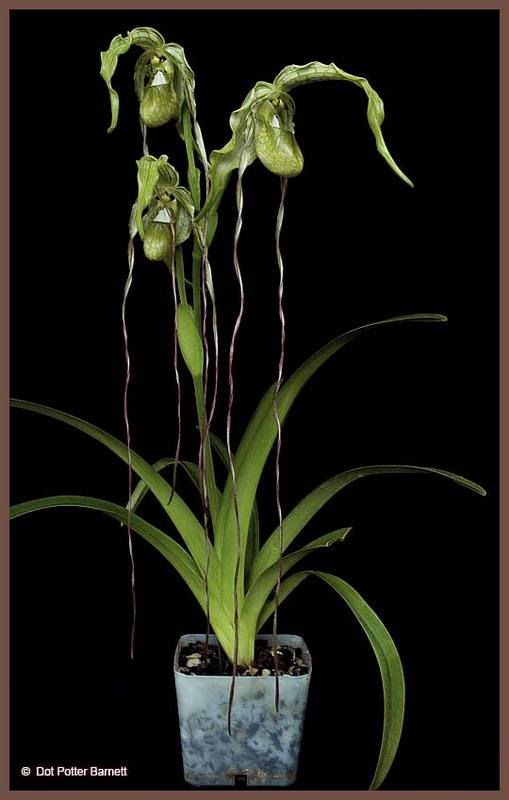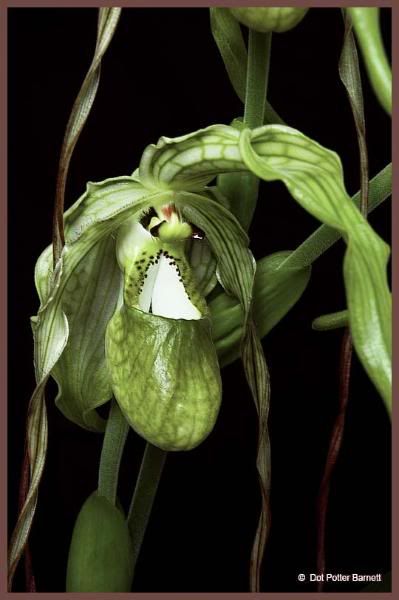SlipperFan
Addicted
That's what the tag says. But is it wallisii?







Looks like caudatum. Unfortunatly, not warscewiczianum.
Kyle
Looks quite a bit like mine, flower & foliage. I'd say the color on mine was lighter, leaning toward yellowish. Mine is tagged wallisii but haven't they been reclassified to warscewiczianum? Kyle - what's the difference?
Now to the culture question.
Grow your Phrag caudatum WET. The books are misleading. ALL Phrags come from habitats that are very wet. Splash zones of water falls frequently get mentioned. Phrag caudatum comes from a habitat that is a little bit less wet than other Phrags, this is still far wetter than anything any Cattleya would tolerate. Give your caudatum more light, a more open potting mix, and more air movement than your other phrags, then you can still grow it standing in water, or give it daily waterings. Think of Phrags as semi-aquatic Vandas. Light lovers that love water too. Phrag caudatum grows as an epiphyte on trees on the cliffs just below Machu Pichu in Peru, with Masdevallia veitchii growing in the grasses below or alongside. Think daily rain, wet fog & breif periods of very hot bright sun. Temps often quite cool due to elevation. When the sun comes out, it is very bright, because you are almost 2 miles above sea level. Everything gets wet and dries out a couple times a day, then gets wet and stays wet all night long in the wet fog.
Leo -- I'm wondering if you read my post, or maybe you were writing yours as I was writing mine. But I think we said the same things.The Phrag in the first picture posted is Phrag caudatum.
The 2nd and 4th image are what Sandy Ohlund & Guido Braem refer to as Phrag popowii, formerly known as warszewiczianum. Phrag popowii is the 'Central American version of caudatum.
The 3rd and 5th photos are what Ohlund & Braem call warszewiczianum, formerly known as wallisii. The lovely Colombian version of caudatum, with the shell pink pouch.
Enter your email address to join: